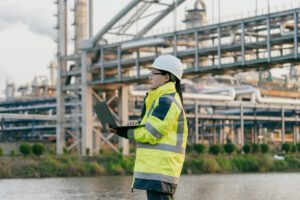A few months ago, I had the opportunity to take my kids to Florida to experience the wonder that is Disney World—with its numerous theme parks and roller coasters. In recent years, these venues have invested millions to introduce new, state-of-the-art “rides” to attract kids of all ages. These new rides aren’t necessarily bigger (in terms of size) but rather, are more advanced (in terms of technology) than ever before. The newest (and coolest) rides now offer some form of virtual reality. Riders no longer sit back to enjoy the ride. Instead, the rides take them into a world of total immersion, allowing riders to interact and play roles within the ride.
However, just as virtual reality is revolutionizing the roller coaster experience, augmented reality is literally changing the world we live in.
Last summer, Pokémon Go, became the most popular commercial example of augmented reality. This location-based augmented reality game allows players to use their mobile device’s GPS ability to locate, capture, battle, and train virtual creatures who appear on the screen as if they were in the same real-world location as the player. Its success was measured by more than 500MM downloads in 2016.
Now take those two technologies and apply them to your job. Or to those of your operators, maintenance engineers, and/or new employees. Virtual Reality and Augmented Reality are quickly becoming the industry norm to deliver operator training, process simulation and asset management solutions. The MWPowerLab acquisition by Schneider Electric on February 2, 2017 ensures its customers have access to the most advanced technologies for a positive user experience.
| This technology is coming to a workplace near you. It is not a question of “if” but rather “when”. Do you want to be on the leading or lagging edge of this technology? |
Digital Transformation in Process Industries
The process industries—oil & gas, mining, and power—are undergoing a digital transformation. Successful digitization must address three key customer challenges: (1) turning data into analytics for better visibility and optimization, (2) using predictive analytics for proactive maintenance, and (3) capturing best practices for knowledge transfer. Turning talk into action can be difficult. A good place to start is by evaluating how the technologies offered by Schneider Electric can execute complete enterprise asset management.
Learn more on Digitizing the Workforce
- Download the on-demand webinar: Using the Latest Technology to Achieve Workforce Excellence
- Register for the next live webinar: Leveraging Technology to Improve Workforce Competency in Mining, Minerals and Metals Industry


